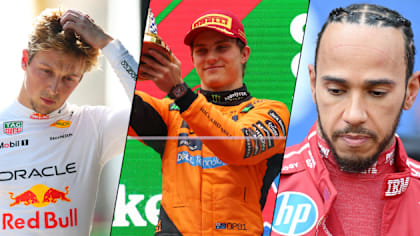
LIVE
14.6°C
Lap
53 / 53
- 1Leader
- 2+1.423
- 3+2.129
Technical
TECH TUESDAY: Why have Aston Martin and Mercedes opted for 'rippled' floors on their new cars?

Share

Mercedes revealed their secretive new floor on the W12 at pre-season testing in Bahrain, with Aston Martin the other team to adopt a similar 'rippled' effect on that part of the car. So what does it do? And why have those two teams both opted for that design? Mark Hughes takes a close look in this week's Tech Tuesday feature, with with illustrations from Giorgio Piola.
Question marks from testing surrounding the performance of both the Mercedes W12 and Aston Martin DBR21 should be answered this weekend as the season finally gets underway in Bahrain.
They each suffered their problems during the three days of testing, not just confined to their shared-design gearbox. The Aston had a series of other mechanical niggles which prevented Sebastian Vettel from setting a representative time when the track was at its quickest, at the end of the final day, while the Mercedes was suffering from difficult handling which the team has been working hard at trying to understand ahead of this weekend.
READ MORE: 6 Winners and 6 Losers from 2021 F1 pre-season testing
The two cars are the product of the same original design principals, but as the two teams have continued their own development paths over the past year they are gradually diverging in their details but within the same broad aerodynamic philosophy.
The Mercedes W12’s floor created much attention when the car first appeared in Bahrain testing, particularly the waves on the outboard edge just aft of the barge board area, replacing the larger pressure-reducing cut-outs that were commonplace before this season.
2021 Pre-Season Testing: Mercedes' floor analysis
The Aston Martin uses similar cut outs to the Mercedes in the floor edge but fewer of them (as you can see in the image and the video below). They are doing much the same job in both instances, but the fact that this multiple ‘waves’ feature has appeared simultaneously on the only two low-rake cars is probably significant (rake angle referring to the ride height of the car, rear to front, as explained here).
READ MORE: Have the 2021 rule changes swung the advantage from Mercedes to Red Bull?
The general idea of these upturns on the floor’s edge are to create clockwise vortices of air which will travel down the length of the floor’s outer edge, helping seal it and thereby increasing the air pressure difference between the ambient and the underfloor, which in turn increases the downforce created by that underfloor.
At slow car speeds, as underfloor airflow speed reduces, so it becomes more difficult to seal that floor.

Comparing the Aston Martin and Mercedes floors
In low-rake cars such as the Mercedes and Aston Martin, that airflow speed will tend to slow more than on a high-rake car (like the Red Bull) which can keep the floor’s flow energised by the greater expansion angle of the floor itself. It would appear that the low-rake cars, under the new regulations which have cut the floor area, need to energise that floor more by way of these sealing vortices.
Another aerodynamic characteristic which can be more problematic for low-rake cars than high is the phenomenon of flutter whereby the airflow beneath the floor can reverberate off obstacles in a cyclic way, creating a disrupting effect unhelpful to the floor’s creation of downforce.
It might be that the revised floor shape for this year has induced this trait more readily and that the vortices from the cut-outs are better able to break that cycle.
Either way, finally finding out the true performance potential of each of these cars is going to be one of the more fascinating aspects of this weekend.
2021 Pre-Season Testing: Aston Martin's floor analysis
YOU MIGHT ALSO LIKE
News Sainz ‘puzzled’ by lack of pace for Williams in ‘one of the strangest swings of performance in my career’
FeatureF1 Unlocked PALMER: Why has Lawson struggled at Red Bull – and should they swap him for Tsunoda?
Technical TECH WEEKLY: The key reasons behind Leclerc and Hamilton’s disqualifications – but do Ferrari have a headache with the SF-25?
FeatureF1 Unlocked 5 Winners and 5 Losers from China – Who finished the Sprint weekend in style in Shanghai?




